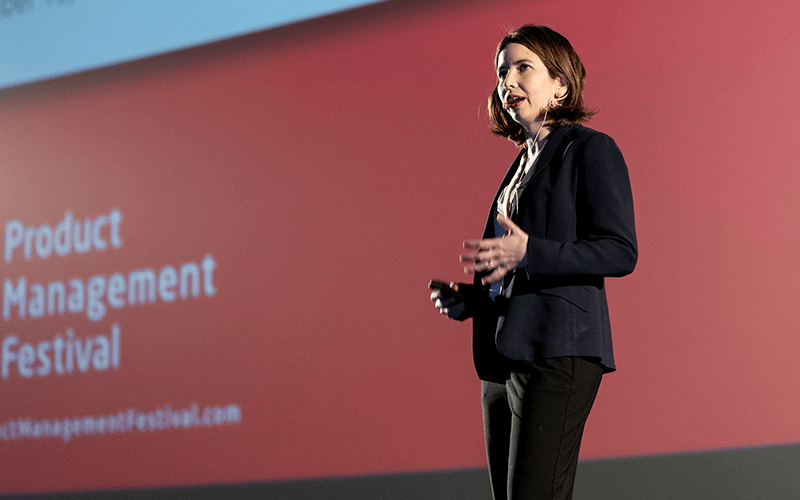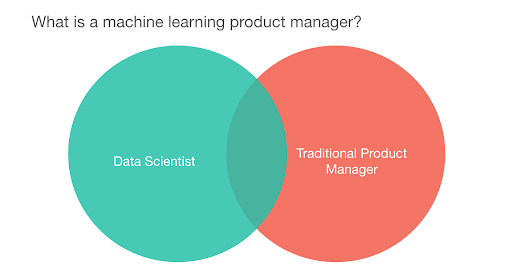Personalization and the rise of machine learning product management

Laura Hamilton didn’t plan to pursue a career in product management. But, like many product managers, she fell into the field thanks to her passion for building and bringing new things to life. Currently, she leads the personalization product team at Rally Health, a health tech company empowering individuals to take charge of their health by providing personalized, data-driven information and recommendations. The product relies heavily on machine learning to deliver bespoke experiences to its users — a technology that Laura is an expert in.
We were excited to sit down and chat with Laura about the rise of machine learning product management, the importance of personalization in modern products, and how Rally Health is using machine learning to deliver personalized experiences to its users.
Continue reading for a lightly edited version of our conversation.
Tell me a little bit about Rally Health. What problem is your company trying to solve for users?
Healthcare is really complicated for so many reasons. Information silos and fragmentation within systems allow for mistakes to happen frequently, and it is surprisingly difficult to find cost-effective care. Recently, a friend of mine was trying to figure out how much it costs to give birth. After calling several hospitals, no one could give her an answer. Not only that, they were confused by the question. This is like asking your real estate agent how much it costs to buy a house, only to learn that you need to buy it first to find out the price.
Rally Health exists to solve these problems that are so central to our lives. Our ultimate mission is to make health simple for people by keeping them engaged in their daily health, saving them money on their health, and providing digital-first access to expert care.
Machine learning plays a huge part in our efforts to personalize our product and enables us to offer unique experiences relevant to the needs of individual users.
Why is machine learning so important — for both Rally Health and other companies?
A 2019 survey by Redpoint Global and Harris Poll found that 63 percent of consumers expect personalization as a standard of service; 61 percent expect that relevant data about them will be at a company’s fingertips; and 53 percent expect a brand to know their buying habits and preferences and be able to anticipate their needs. To provide the kind of hyper-personalized experience that users now expect, product managers need to leverage machine learning.
“To provide the kind of hyper-personalized experience that users now expect, product managers need to leverage machine learning.”
You can use machine learning to figure out the exact thing that a user needs in a certain context and time. You can also take advantage of the interactions and data you have from other users to draw similarities between users.
Machine learning is the new standard for personalization. It means something that all the big brands — like Facebook, Google, Uber, and more — now use machine learning.
Can you tell me how machine learning plays into your role and day-to-day work?
Our product team utilizes the backend machine learning algorithms to power personalization on the Rally digital platform. This year, we rolled out a number of personalized offers for our users using machine learning.
We show users the right action to take at the right time based on their propensity to interact with that action, as well as the quantification of how much healthier they can be by taking that action. We have a proprietary index called the Health Activation Index that helps measure the potential impact of taking a given action.

Can you give examples of how you implement personalization via machine learning throughout Rally’s product experience?
When I open up Rally’s mobile app as a user, I’m going to see a personalized list of actions for me to take based on my Health Activation Index.
Here’s how it works:
For a given set of personal health actions, Rally uses machine learning to calculate each user’s personalized propensity to engage with each one. For example, I might have an X percent probability of engaging with the flu shot action and getting the flu shot and a Y percent probability of engaging with the cervical cancer screening recommendation and getting that screening done.
We continually create models to gauge how users will interact with different actions.
We then multiply these probabilities with potential impact, helping users understand how different actions will affect their health. For that, we use our proprietary Health Activation Index that was developed based on more than ten years of healthcare economics data.
Rally also looks at a lot of different data sources, including claims, self-reported data from health surveys, the types of clinical programs a user may be eligible for based on their employer-provided health benefits, and more.
So, to summarize, it’s a two-part system. Rally uses machine learning to calculate a user’s personalized propensity to engage. Then there’s another layer where they get relevant recommendations based on that understanding along with other data.
What unique skills do machine learning product managers need to have? What sets them apart from traditional product managers?
As a machine learning product manager, you need to be both a product manager and a data scientist. In fact, many people start their careers as data scientists and then transition to machine learning product management.

For a machine learning product manager to be successful, it is necessary to understand data at a very granular and technical level. You need to know how data models are working, the story data is telling you, what data is going to help with product performance, and what types of data models to use within the product experience.
So, both traditional product managers and machine learning product managers identify the objective of the product and set product strategy. The difference is that machine learning product managers go the extra mile to define a data strategy and build a data moat as well.
Why is it important for machine learning product teams to have a data strategy, and what is a data moat?
A data strategy is part of your product strategy and your competitive strategy. To gain a competitive edge in the marketplace, product teams need to build a data moat — proprietary data to build algorithms on top of that your competitors don’t have and have trouble getting.
I think the easiest way to answer this question is to explain what it looks like if you don’t have a data strategy and moat. Let’s say your entire product is based on algorithms that run on data that’s either publicly available or easy to get. It’s very easy for other startups to replicate your algorithm and build a cheaper product, or for an established company to just add that as a feature to an existing product. And now you have nothing that you can sell. These situations happen frequently.
Facebook and Instagram have an incredible amount of proprietary data on their users. By leveraging this data, they can show hyper-personalized ads to their users and provide a cost-effective placement strategy for advertisers. Compared to ad placement offerings that are less personalized, this is an enormous competitive advantage.
It’s the same with Google — with their immense repository of search data, they can show the right ads, in the right search results, at the right time. As a result, no search engine has been able to compete with Google to date.
In this day and age, data is power.
With the amount of data available, how can machine learning product managers identify and prioritize the data that actually matters?
The first thing you should do is define your company mission. It needs to be very clearly articulated by the CEO, and individual contributors should live and breathe the company mission.
Once you have your mission and your vision set — and I don’t mean corporate hokey pokey, it must actually mean something and be a guiding light for your company — that’s when you define the objective of your product. And that will create a lens to prioritize and focus your efforts and the data you leverage.
From there, we can sort through the different recommendations and ideas for our product and calculate their impact. We can then forecast what that impact will have on objectives and key results.
. . .
Laura Hamilton is VP of Product at Rally Health. Laura has an undergraduate degree in mathematics from the University of Chicago, and a Masters in Computer Science with a specialization in machine learning from Georgia Tech. She has worked as a product leader at five tech companies at various stages of maturity, from pre-funding startup to publicly traded. At Rally, she leads the product team rolling out machine-learning-based personalization to the digital platform.
Don’t forget to follow Laura Hamilton on Twitter and LinkedIn!
. . .
productboard is a product management system that enables teams to get the right products to market faster. Built on top of the Product Excellence framework, productboard serves as the dedicated system of record for product managers and aligns everyone on the right features to build next. Access a free trial of productboard today.


![The CPO’s Blueprint for Annual Planning: An Opportunity to Drive Change [Part 3]](https://www.productboard.com/wp-content/uploads/2024/11/strategy-blueprint-560x293.png)


